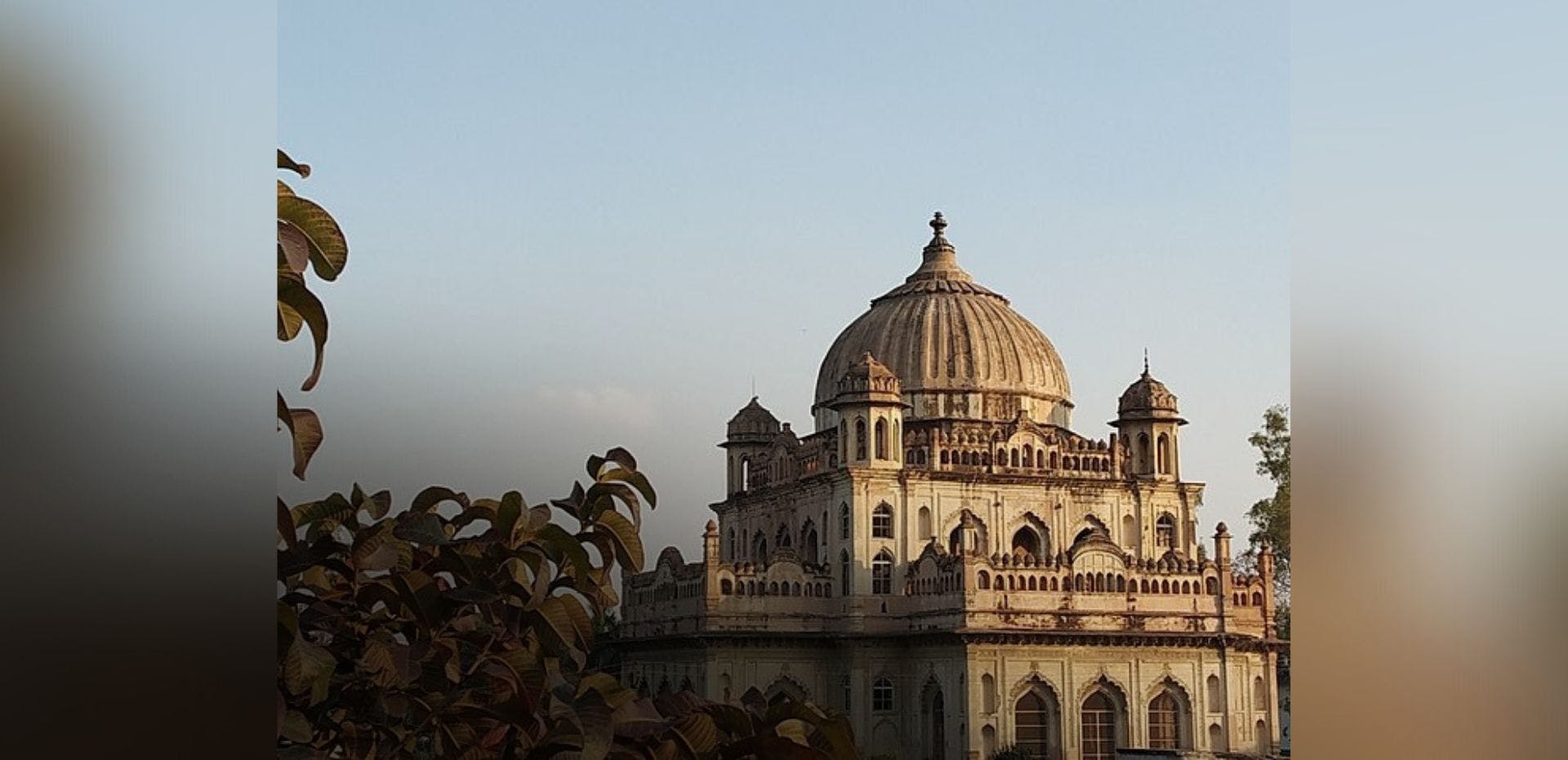Lucknow’s Twin Tombs
BOOKMARK
In the heart of Lucknow, near the Begum Hazrat Ali Park in Qaisarbagh, are twin towers. But these are no modern skyscrapers; rather, they are a pair of towering, early 19th-century towering mausoleums surrounded by a lush green park. They are the tombs of Nawab Saadat Ali Khan II and his beloved Begum Khursheed Zadi.
Architecturally intricate, these twin mausoleums are largely ignored by tourists whose whistle-stop visits to the city leave time only for high-profile monuments such as the Bara Imambara and Rumi Darwaza, but some say these maqbaras, or tombs, are more artistic than even the magnificent Asafi Imambara.
Saadat Ali Khan (r. 1798 - 1814) was the sixth Nawab of Awadh and the stepbrother of Nawab Asaf-ud-daula, who shifted the capital of Awadh from Faizabad to Lucknow in 1775. While Asaf-ud-daula shaped the city by systematically building excellent roads, palaces and gardens, Saadat Ali Khan continued this tradition and built a number of grand monuments in Lucknow.
He was an able administrator, who despite the building spree he embarked on managed the Treasury of Awadh very sensibly. In fact, he cleared all the debts of the Awadh state during his lifetime and left the kingdom an architecturally beautiful legacy.
Saadat Ali Khan died in July 1814, at the age of 60, and was buried at his eldest son’s Ghaziuddin Haidar’s residence in Khas Bazar, now known as Qaiserbagh. Khas Bazaar was then a market for the elite and the rich, and was patronised by ministers, nobles, and foreign visitors. Interestingly, Saadat Ali Khan’s mausoleum was built after Ghaziuddin Haidar demolished his own residence to gift his father a grand edifice.
Ghaziuddin Haidar proclaimed that since he had succeeded his father and took his place, his father should take his place and rest in a mausoleum where his home once stood. Thus, Ghaziuddin Haidar moved to Chhattar Manzil Palace, where his father’s had lived, and ruled from there.
Located at a short distance from Chhatar Manzil Palace, Saadat Ali Khan’s tomb is larger than that of his wife, Khursheed Zadi, and is located not far from it. Since Khursheed Zadi had died during her husband’s reign, construction of her tomb had begun during in Saadat Ali Khan’s lifetime but was completed by her son, Ghaziuddin Haidar, in 1824, ten years after her husband’s maqbara was built.
– Both tombs are fine examples of Nawabi-era architecture and are built in Indo-Islamic style, which was patronised by the rulers of Awadh.
The floor of the hall of Saadat Khan’s maqbara is laid with black-and-white squares of marble. In this part of the country, where marble is scarce, flooring like this is rare in monuments. The walls of the facade have exquisite stucco work, which is still visible. On all four sides, the hall is flanked by rectangular verandahs that have arched doorways opening outward.
The mausoleum is decked with a hemispherical dome fluted with narrow, regular ribbing. A large guldasta, or inverted vase, adorns the top of the dome, which has a gilded finish. Arched verandahs on the southern and eastern sides of the monument have the graves of the Nawab's daughters and three wives.
The mausoleum of Khursheed Zadi is just south-east of its twin. Although its dome is not as big as that of Saadat Ali Khan’s maqbara, it is equally impressive and rich in ornamentation. The grave of the queen and her son are in the basement.
When the Revolt of 1857 broke out, the twin mausoleums were fortified by the Indian soldiers, and cannons were hauled all the way up to the terrace of the maqbaras. On 16th March 1858, 16 soldiers of Sir Henry Havelock were killed by shelling from the maqbara as they were proceeding towards the Residency. The soldiers were buried on a piece of land between the two mausoleums.
The mausoleums are centrally located and one can see them on the main road itself when they enter Qaisarbagh from Hazratganj. Both monuments are in good shape and, although they could do with some restoration, visitors can visit them during the day time as they are splendid examples of the glory days of Awadh.










